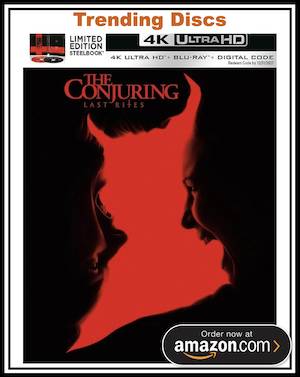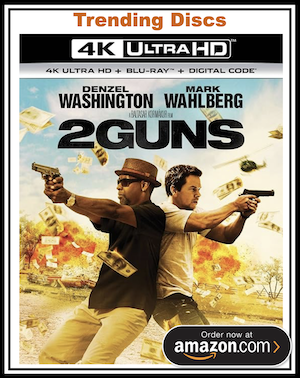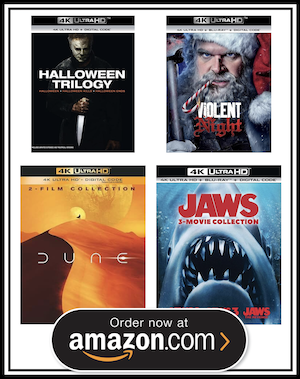Michael Scott
Partner / Reviewer
More
- Preamp, Processor or Receiver
- Yamaha TRS-7850 Atmos Receiver
- Other Amp
- Peavy IPR 3000 for subs
- Universal / Blu-ray / CD Player
- Panasonic UB820 4K UHD Player
- Front Speakers
- Cheap Thrills Mains
- Center Channel Speaker
- Cheap Thrills Center
- Surround Speakers
- Volt 10 Surrounds
- Surround Back Speakers
- Volt 10 Rear Surrounds
- Rear Height Speakers
- Volt 6 Overheads
- Subwoofers
- 2x Marty subs (full size with SI 18's)
- Video Display Device
- Sony 85 inch X950H FALD TV
In This Corner of the World

Movie:
Video:
Audio:
Extras:
Final Score:
Movie:

Video:

Audio:

Extras:

Final Score:

War is a tough thing, but one of the toughest things is looking past your own reality and looking at the story from the perspective of the other side. As a westerner it’s easy to remember the war stories, loathe the idea of Japanese POW camps, and sadly remember the bombs of Hiroshima and Nagasake as a necessary sacrifice to win a brutal Pacific war for all involved. But the one thing that is hard to visualize is the life that the average, everyday, citizen went through in Japan. These aren’t the battle hardened soldiers that my grand father fought back in the 40s, but rather the terrified people like you and me who went to bed every night hungry due to food rations, and the ones who dug cellars out to survive the constant Allied forces bombing raids that plagued their home villages. Based upon the very popular Manga series by Fumiyo Konno, Sunao Katabuchi’s In This Corner of the World is an intimated and deeply personal look at one woman’s struggle through the end of the Japanese involvement in World War II, living outside of Hiroshima in the village of Kure, Japan.
Co-written by Sunao Katabuchi and Chie Uratani (both collaborated together in Studio Ghibli’s Kiki’s Delivery Service), In This Corner of the World is a direct labor of love and a passion project for the two. The film started out as a crowd funded event back in 2012, and it took a grand total of 4 years to come to fruition as Katabuchi worked tirelessly to get the film made. The entire film is hand drawn (a true treat for a market that is over saturated with computer generated animation), and sourced from pre-war Hiroshima photographs and video elements, making it one of the most accurate animated replications of the place in an animated film to date. This authenticity creates a sense of harrowing realism that just sucks you into the film, making it feel as if this was a movie made back in the hey-day of Japanese animation during the 90s or early 2000s instead of a modern day retelling.
The story starts in the early 30s right before World War II starts with a young Suzu Urano and her formative years. A few fast forwards later and it’s right at the tail end of the war, during 1944 as an 18 year old Suzu is married off to a naval clerk named Shusaku (an arranged marriage, like most of that time period). Suzu’s life changes rapidly, as he she now is no longer a daughter and member of her father’s house, but the wife of a new husband, and is now forced to live with a completely new family in Kure, miles outside of her childhood home of Hiroshima. Things aren’t easy. Shusaku is a kind young man, and loves her dearly, and her in-laws are kind people, but her sister in law, Keiko, is a bit of a shrew and the war has made things difficult for everyone with rationing and the constant fear of night raids.
In This Corner of the World is absolutely breathtaking for various reasons. One of the biggest being it’s simple, yet exquisitely explored sensation of optimism and hope in a time of war. Even though rations are painful, and fear of her husband dying is real, Suzu keeps a sense of optimism and joy about her that is infectious to all around her. Even Keiko, the resident shrew, can’t help but be affected by her young sister in law’s desire to please and make people happy. On the other side of the coin, this is not a movie that breeds light hearted joy and happiness. Despite Suzu’s optimism and forward thinking, there is the brutality and pain of realism thrown in there as well. The war’s continued assault makes it harder and harder for poor Suzu to keep her joy about her, and a series of tragedies in the second half (I won’t spoil the first one outright, but the second is impossible to miss. She comes from Hiroshima, and that coupled with the fact that we’re at the end of war leaves the viewer with an ominous sense of dread as the minutes slowly wind down to the final 30 minutes of the movie), threaten to break her completely. Still, despite all this pain, despite the trials, Katabuchi ends the film on a high note, bolstering the idea that Suzu’s optimism isn’t a failed effort at false happiness. Instead focusing on the idea that you move forward and continue upwards, despite the agony that you have to suffer through to get there.
My only complaints with the film have to do with the center act of the film, and a little bit at the beginning, which bog down the storytelling just a bit, and also cut out some important side characters from the manga. Other than those small quibbles, the film is an absolute gem, with memorable characters and a sense of harsh realism that bubbles through the glowing rose colored glasses of our heroine. The film doesn’t try to cut your soul out with a knife like Grave of the Fireflies (there’s very few wartime Japanese anime films that can literally send a grown man into tears like that movie can), but there are several moments where you feel the wind just sucked out your gut, and while there are two VERY visceral moments that do just that, it’s almost the little hints at what is to come that hurt the worst (such as Suzu’s sister getting sick at the end, with only the audience realizing that it’s radiation sickness. A disease that will ravage the people who lived near the blast zone of Hiroshima and Nagasake).
Rating:
Rated PG-13 for thematic elements including war-related images
Video:

Audio:

Extras:

• U.S. Tour Highlights
• "Hiroshima & Kure: Then and Now"
• Interviews with the Director Sunao Katabuchi and Producer Masao Maruyama•
Final Score: 

In This Corner of the World is a magnificent character piece film, and one that actually did really well in the Japanese box office. The film earned back roughly 10 fold its budget, making it one of the more successful animated films to date, and bodes well for lovers of traditional animated movies. The film moves at a slow pace, but is filled with all sorts of incredible moments, and the final 3rd act of the movie is absolutely breathtaking and incredibly intense. Shout Factory outdid themselves with a picture perfect audio and video encode and even some decent extras (the interviews with real survivors of the era are the most fascinating), although a bit slim in quantity. If you’re a fan of really well done dramas in the animated world, then In This Corner of the World is something you don’t want to pass up. Highly recommended.
Technical Specifications:
Starring: Kira Buckland, Christine Marie Cabanos, Non
Directed by: Sunao Katabuchi
Written by: Sunao Katabuchi (screenplay), Fumiyo Kono (manga)
Aspect Ratio: 1.85:1 AVC
Audio: English: DTS-HD MA 5.1, Japanese DTS-HD MA 5.1
Studio: Shout Factory
Rated: PG-13
Runtime: 129 Minutes
Blu-ray Release Date: November 14th, 2017
Recommendation: Must Buy







 ).
).






